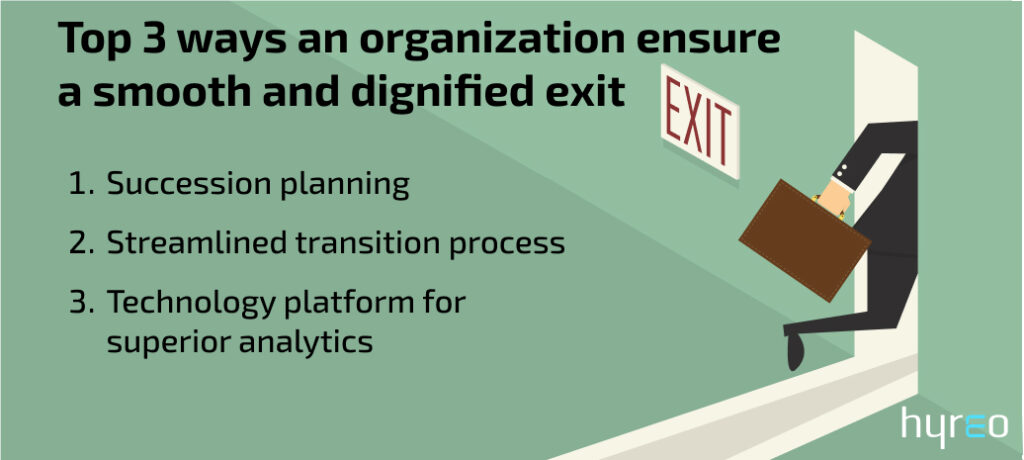
The pandemic has really forced people to look at their personal and professional priorities differently, leading them to take decisions that may have been unthinkable before. While the Great Resignation commenced way before the pandemic, it exacerbated the situation, with the exodus causing a hard-to-fill void in the skilled workforce. With a long winter coming right on the heels of the Great Reshuffle, this “experienced hands” talent gap is widening. This greater need for a worthy workforce is driving the organizations to attract back their “proven” talent; about 56% of HR give boomerang applications a high priority, with 40% of HR professionals having hired back half of their alumni who applied for roles with them. Rehiring is indeed a viable option, as per the Corporate Culture and Boomerang Employee study, with 15% of associates having already boomeranged back to their old companies and a good 40% giving it a serious consideration.
According to Forbes, these Comeback associates, by virtue of their earlier stints would have a good grasp of the company work culture and expectations, helping them transition into a role quickly and smoothly. They also bring a fresh outlook from their experience with other organizations, giving the company a competitive edge and helping them progress strongly on their business goals.
If anything, the Big Quit has highlighted the need for organizations to view employee experience in a whole new light; placing greater emphasis on nurturing and valuing them, creating meaningful work, cultivating a sense of purpose and belonging, enabling their health and wellness, all the while paying them handsomely.
The employee experience is an all-encompassing one, with all interactions and transactions from induction until relieving and the tenure in between creating the associate’s brand image of the organization, ultimately translating into their willingness to return. Here, while the organizations have the greater responsibility to ensure that the associate’s experience during their resignation is just as good if not superior to their onboarding, it is upon the associate too, to contribute to this exercise and leave on a good note.
So how can the organization ensure a smooth and dignified exit?
Once informed of an associate’s intent to leave, the organization must respond with equanimity, ensuring that all interactions with the associate, from the manager to the HR, are authentic, courteous and confidential (as required) with a view towards organizational improvement.
- Succession planning: To offset the impact of a person leaving, the organization must formally adopt succession planning for all the roles, especially the ones with niche skills and/or heavy interfacing with the customers.
- Productive interfacing: Face to face discussions with associates must be only to provide or elicit information of value towards building a strong and lasting relationship with them.
- Streamlined transition process: A solid transition plan with clear ownership and agreed outcomes, regular reviews and check points to enable a smooth transition without gaps.
- Automate for enhanced exit experience: The exit process should be automated to perfection with all the relieving processes being completed on time with no follow up from the associate.
- Technology platform for superior analytics: Organization must invest in a robust technology platform to capture meaningful data related to the associate such as triggers, detailed reasons for leaving, feedback on organizational culture along with NPS, processes, customer engagement, leadership roles etc. This data can be leveraged by the organization to run analytics, deep dive into attrition, alumni network management etc.
All those representing the various positions of authority within the organization should respond along the lines detailed below:
- Manager: Being the first formal point of contact of the associate, it is imperative for them to be objective, accepting and supportive of the career aspirations and choices of the associate. That said, they are expected to have a pulse of the associate’s flight risk based on their structured career discussions and engagement. So, in most cases, a resignation should be anticipated/predicted and appropriately highlighted to the leadership ahead.
- Leadership: While every attrition, especially those of top performers, sets everyone off on a wild scramble, care must be taken to be respectful of their decision and not view retention as the only viable option at hand. Communication with key internal and external stakeholders must be done by highlighting effectiveness of succession planning
- Team members: Equally impacted by their team member leaving, they must be informed of the upcoming changes in their work in terms of roles, responsibilities and expectations as well as be active participants in the transition plan.
- HR: An autonomous entity, it must provide an independent and objective view of the manager’s decision to retain, if at all. More than business continuity, their view must be based on the technical and leadership potential and ability to be moulded into key roles in the future
And how can an associate exit gracefully?
An associate’s primary objective must be to ensure minimal business impact and disruption of services to the organization and/or customer. They must align with the organization mandated guidelines and expectations with clear articulation of concerns/support required for any unforeseen issues.
- Firstly, not use this as an opportunity to negotiate for a better role, designation or pay at the current organization
- Honour customer/organizational obligations with utmost care to respect and maintain client confidentiality at all times
- Serve the notice period as expected and provide clear and concise information to organization/customers on personal circumstances (if any) to allow them to make alternate arrangements, minimising business impact
- Adhere to the transition plan, handing over all responsibilities along with the appropriate collaterals with no information being withheld
- Place queries regarding the exit with the appropriate teams while being respectful of their SLAs
- Provide unambiguous and constructive feedback regarding the organizational process as well as assets (including but not limited to systems, support teams, leadership etc) with a view to help enhance the brand image
- Should clearly and prudently articulate the reason for leaving rather than pander to office gossip
The associates must conduct themselves professionally all through, by being available during the notice/transition period and ensure that the last day is treated as a working day too.
With more than 20 percent of workers changing roles every year, leaving organizations with a significant knowledge gap, there is an acute need to attract back talent than before. In line with that, they must pay special attention to exiting associates, by leveraging face-to-face interfacing to thank them and clearly articulate their value and contributions during their tenure. Emphasis must be placed on their esteemed role as brand ambassadors of the organization to the outside world. Companies must continue that engagement by investing in technology and build strong relationships with their alumni, starting from a robust system to maintain historical data to creating forums/platforms (Alumni meets, corporate conferences, employee referrals etc.) to engage with them frequently on a meaningful context. This will pave the way for their key associates to boomerang back to them sooner than later.
So, is it to be the Big Leave or the Big Comeback, is up to both the organizations and the associates to decide and act upon!



